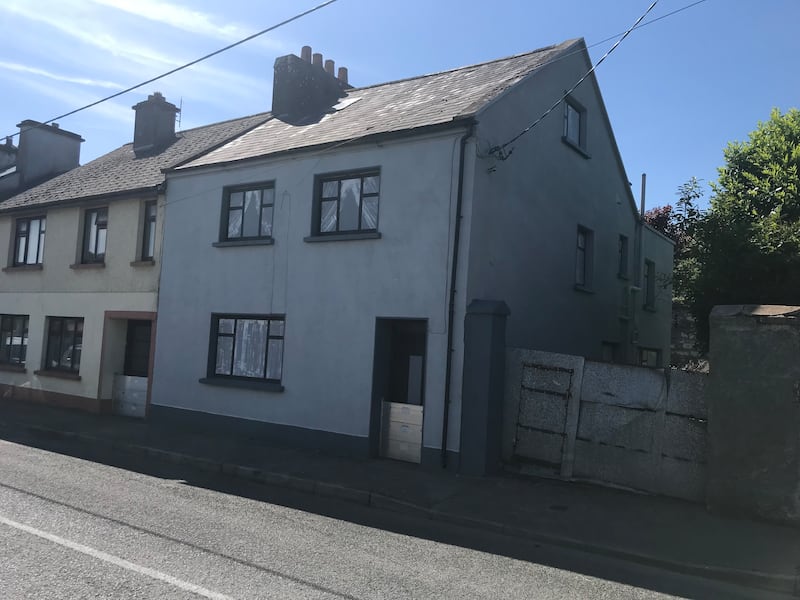Trawling property websites for “the one” can be heartbreaking, but you could try talking to a matchmaker. Mayo County Council has entered the dating game and they want you to fall in love. By linking prospective buyers with the owners of vacant and derelict properties, it hopes to give unloved houses a “happy ever after”.
Mayo has one of the highest vacant property rates in the country, and the council is pulling out all the stops to fix it – namely, the Vacant Home Matchmaker Scheme.
The council is also behind vacanthomes.ie, a website where citizens of any county can anonymously log homes in their area that they suspect are vacant. The addresses of 10,000 potentially vacant properties have already been crowdsourced through the site, enabling authorities to tap into local knowledge. Vacant homes officers in the area then follow up with owners to get the properties back in use.
So how does the new matchmaking scheme work? Owners of vacant and derelict properties and potential buyers seeking a home are invited to submit their requirements to the council, who will then set about pairing them up. If council workers spot a match, the owner of the vacant home and the prospective buyer are sent each other’s details to follow up.
From Baby Reindeer and The Traitors to Bodkin and The 2 Johnnies Late Night Lock In: The best and worst television of 2024
100 Years of Solitude review: A woozy, feverish watch to be savoured in bite-sized portions
How your mini travel shampoo is costing your pocket and the planet - here’s an alternative
My smear test dilemma: How do I confess that this is my first one, at the age of 41?
“The property owner will see themselves matched up with people who specifically want to purchase a vacant house,” says Tom Gilligan, director of services at Mayo County Council.
“For the potential buyer, there are a wide range of vacant homes from contemporary to period and those in move-in condition, along with others that require big works in areas all over the county,” he says.
“For both the vacant property owner and the potential buyer, this is a win-win as it’s a service that is totally free for both.”
The council isn’t trying to muscle in on estate agents, Gilligan is keen to stress. What the matched parties do next is up to them. The council is just facilitating introductions.
“What we really want to do is to get people talking to each other. It doesn’t cost anyone anything to pick up the phone and have a conversation,” he says. Parties should get their own legal advice too, he advises.

The scheme has already attracted about 200 inquiries since it was launched in September, Gilligan says. This has translated into a live list of about 50 vacant and derelict property owners who are open to inquiries. The properties include a two-bed apartment in Westport, a two-bed apartment in Castlebar, a four-bed house in Knock and a six-bed house outside of Westport.
There are already some promising pairings on the council’s matchmaker book. While none have signed a legal contract yet, there are a few sales in train, says Gilligan.
House-hunter Bretton Williams is one of those who registered for the scheme.
“It’s a bit of a crazy race to try to find something,” says the Mayo man. “They sent me a list they had of different vacant properties and owner details, and I could contact them if I wanted to. It was helpful,” he says.
There were none available in his preferred area of Louisburgh and he has subsequently gone “sale agreed” on a home there he found through word of mouth, but he thinks the scheme is valuable.
“It’s an alternative to the estate agents and the property websites. You might be able to cut to the chase a bit quicker and have a quicker sale.”
About 8 per cent of all properties in Ireland (excluding holiday homes) are vacant, according to figures from Census 2022. That’s about 163,433 houses, flats and apartments. Vacancy rates are highest in the northwest and along the west coast, according to the data.
Cork (11,994), Donegal (9,615) and Mayo (8,922) topped the leader board of counties with the highest number of vacant dwellings on census night.
Some of these may only be vacant for a short period for reasons including the home is for sale or rent, it’s a new build, the home is being renovated, or the occupant is in hospital or a nursing home.
Dún Laoghaire-Rathdown, for example, was the area with the highest proportion of vacant dwellings where the resident was in a nursing home or hospital. This was the case for 11 per cent of vacant homes there.
Thousands of vacant homes, however, have been vacant for years. In Mayo, for example, there were more than 3,910 dwellings classed as vacant both in the 2016 and in the 2022 census six years later. Nationally, the figure was about 48,000 empty homes. There were 23,072 dwellings vacant in all three censuses: 2011, 2016 and 2022.
In Mayo and Roscommon, 25 per cent of properties that were vacant were so because the owner was deceased, according to Census 2022 figures.
“Unfortunately, we do suffer from vacancy and dereliction in a lot of our towns and villages, so I saw a great opportunity there to get people talking and to get vacant homes back into use,” says Gilligan.
The Mayo matchmaker scheme has had enquiries from people in the US and from Northern Ireland. Those people can apply, but the property has to be the applicant’s principal private residence or available to rent, he says.
Potential buyers of vacant and derelict homes can mitigate refurbishment costs by availing of the Government’s Croí Cónaithe vacant property refurbishment grant. Buyers can apply for grants of up to €50,000 to renovate a vacant property and up to €70,000 if the property is derelict, provided they transform it into a residential home.
To qualify, the property must have been vacant for two years or more. Applicants must own the property, or be in the process of buying it. You can get the grant if you are refurbishing the vacant property so you can live there, or so you can rent the property out.
There is an additional grant for €7,500 for expert conservation advice if you are refurbishing a vacant traditional farmhouse.
Buyers can also avail of separate Sustainable Energy Authority of Ireland (SEAI) grants towards insulation, a heat pump and solar panels. Work covered by the SEAI scheme is not covered by the vacant property refurbishment grant.
There have been 7,300 applications for the vacant homes grant since July 2022, according to Department of Housing figures. Some 4,200 of these were approved and 250 grants had been drawn down by March this year.
Proportionally, Mayo has had quite a high number of applications and grants paid. Figures presented at the council meeting in May show there have been 490 grant applications received; 302 of these were approved and 26 grants have already been paid out. There are a further 142 grants in progress, says Gilligan.
“The grant is proving very popular,” he says. “We will see more homes delivered.”
Grant approval is valid for 13 months, but there are hiccups. “Some delays have happened because some people had contractors lined up but then have had to find someone else. Some applicants can’t get finance to start the work,” he says.
Tweaking the grant would ensure more vacant and derelict properties are brought back into use, according to the Society of Chartered Surveyors Ireland (SCSI). It is calling for a separate grant for would-be buyers to pay a surveyor, architect or engineer to do a feasibility study on the property to establish the cost of viability of refurbishment.
“Taking on a renovation project, you really don’t have a full understanding of the condition of the property and exactly what’s needed,” says SCSI vice-president Gerard O’Toole of Tuohy O’Toole estate agents in Westport.
A feasibility report could cost as little as €1,000 to €2,000 and would give buyers more confidence to take on a vacant or derelict home. A grant like this exists in Scotland, which also has a matchmaker scheme.
Another issue is that payment of the Croí Cónaithe grant is only made on completion of the work. Some buyers don’t have the finance to get this far.
“If someone is building a house and funding it through the bank, there are staged payments as the build progresses. There needs to be something similar with the way these grants are paid,” says O’Toole.
“People are having to fund the entire build until it’s completed. The mechanism of the grant needs to be looked at where funding is in staged payments throughout the build. If this is done, there will be much bigger take-up,” he says.
As in love, there can be something intangible about why people hang on to a property that is unloved. A vacant house has value, yet some owners aren’t prepared to let it go.
“Often, these homes are left when someone is deceased. Maybe they are inherited by a number of people and sometimes it can be difficult to identify ownership of a property,” says O’Toole. “You can have a situation where there is a dispute or a contested will.”
Some families don’t want to poke the hornet’s nest that disposing of a property can be.
“Often there is an emotional attachment where there is ambivalence about selling if you don’t like the idea of it going out of the family,” says O’Toole.
“It’s probably a combination of these issues that has led to a disproportionately high number of vacant homes. It’s certainly leading to a glut of vacant or derelict property – that’s evident.”
A for-sale sign in a rural area can become the talk of the parish. The matchmaker scheme can be a way for owners to explore their options in a more discreet way. It may also ease the process of parting with a much-loved family property.
“I have owners of properties come to me and they are unsure what to do,” says Gilligan. “What we are trying to do really is to encourage them to come forward.
“Through the matchmaker scheme, they have been in contact with potential buyers and those buyers have told them their own story – they might have had a distant relation who lived in the area, or a connection through summers they spent in their younger years on their holidays. Those individual stories, I think they resonate with the sellers and buyers as well. It brings a human element to it.”
If you are interested in the scheme, you can email vacanthomes@mayococo.ie, with Mayo Vacant Home Matchmaker in the subject line






